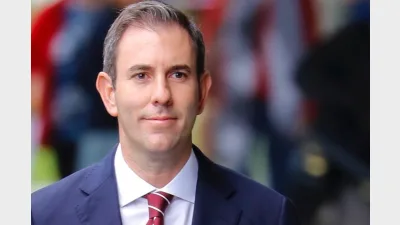(February-2004) ERFs just not sexy enough
ASIC’s report on Eligible Rollover Funds (ERFs) identifies problems with high fees, hidden fees, and inactivity in terms of finding unlocatable members. ERFs accept and protect members transferred from other super funds.
ASIC has found often inadequate, and sometimes potentially misleading, disclosure to members about fees and member protection. The non-disclosure of indirect fees sometimes gave the impression no fees were payable for administration.
They also found that most ERFs weren’t making reasonable efforts to locate members before treating them as “unlocatable”, and found one case of inadequate disclosure relating to lost super searches.
Perhaps surprisingly though, ASIC didn’t look at some consumer issues, and others were noted but not explored.
n Are ERFs properly using the regulations that allow permanent exclusion from being reported as a lost member in certain circumstances? If used wrongly, a member may never be able to track down a lost account.
n Is it in the interest of consumers for some ERFs — which have generally been transferred there by their previous fund — to have tiered crediting rates where higher-balance members receive higher crediting rates?
n Is it in the interests of consumers for ERFs to cover administrative cost by deducting indirect fees from the assets or the earnings? ERFs using this approach to fees are able to collect fees from members while not having to worry about member protection costs.
ASIC concluded, “we consider that we have a role in increasing consumer awareness ... through consumer education”, but didn’t devote one word to recognising the public awareness campaigns undertaken in the past two years. Let’s hope they build on the work that’s already been done, and don’t try and reinvent the wheel.
The superannuation industry now has to look at why the interests of consumers with small, lost and inactive accounts have not always been served by ERFs.
Trustees have a responsibility to act in the best interests of their members. This includes those members transferred to an ERF.
A problem is that ERFs are not sexy.
While funds regularly review many areas of their business, from administration to auditor, ERFs are rarely reviewed in many funds. Many Trustees appear to have adopted a set-and-forget approach to their ERF, with many not reviewing their ERF since the fund was established. This leads to a send-and-forget outcome for the members sent to an ERF.
When funds review what’s available in an ERF, they find out that AUSfund discloses its direct fees ($10 per member per year protected), indirect fees (0.28 per cent in 2002-03), its lost member searching activities, and its matching to find active accounts.
The industry, public sector, corporate and retail funds using AUSfund know this, and many have chosen AUSfund after conducting a detailed analysis of the ERFs on offer.
Another problem is that an effective ERF will be working to transfer as many members as possible to their active super accounts. This is not a strategy for growth. This is easy enough for AUSfund, which operates at the industry fund, “profits-for-members” end of the industry. For an ERF owned by a profit-driven financial institution, this can be a hard strategy to sell to shareholders.
After reading the report, all Trustees should be looking long and hard at their ERFing arrangements.
They should be asking the hard questions about what has been happening to their members who have been ERFed, and whether they’re in the right ERF. Such as:
n What fees will our members pay?
n Are these fees fully disclosed?
n How does the ERF communicate with its members, and what does it say?
n What services does the ERF provide?
n Does the ERF take reasonable steps to locate unlocatable members?
n Does the ERF help re-unite peoples’ ERF account with their active super?
n Does it tell its members about these things?
n Is the fund compliant, and does it properly report lost members?
Trustees need to look at these issues as a priority.
AUSfund is going to keep on doing those things that we think make it different from other ERFs. These are things we’ve been doing for years, as a fund and with others. We’ve worked with the Tax Office as they developed SuperMatch, and with CMSF and many industry and public sector funds on Unclaimed Super Recovery. Every ERF was invited to be a part of the Unclaimed Super Recovery campaign but only AUSfund signed up: let’s hope all ERFs now accept the challenge of looking for the owners of unclaimed super.
The alternative is to accept that the trickle of super money going into consolidated revenue will become a flood over the next few years.
The message for the super industry is that everyone — and Trustees in particular — needs to pay more attention to the interests of the members who are ERFed, and the funds they are ERFed into.
— David Haynes is the Chief Executive of AUSfund
Recommended for you
The major changes to the proposed $3 million super tax legislation have been welcomed across the superannuation industry.
In holding the cash rate steady in September, the RBA has judged that policy remains restrictive even as housing and credit growth gather pace.
A new report warns super funds must rethink retirement readiness as older Australians use super savings to pay off housing debt.
An Australian superannuation delegation will visit the UK this month to explore investment opportunities and support local economic growth, job creation, and long-term investment.









